One of the single best tools out there, and also one that has been with mankind for the longest, is the humble axe.
Axes have been used for all kinds of purposes, usually chopping wood or in brutal close-quarters battle, since before recorded history, and there is no sign that we will be giving them up any time soon.
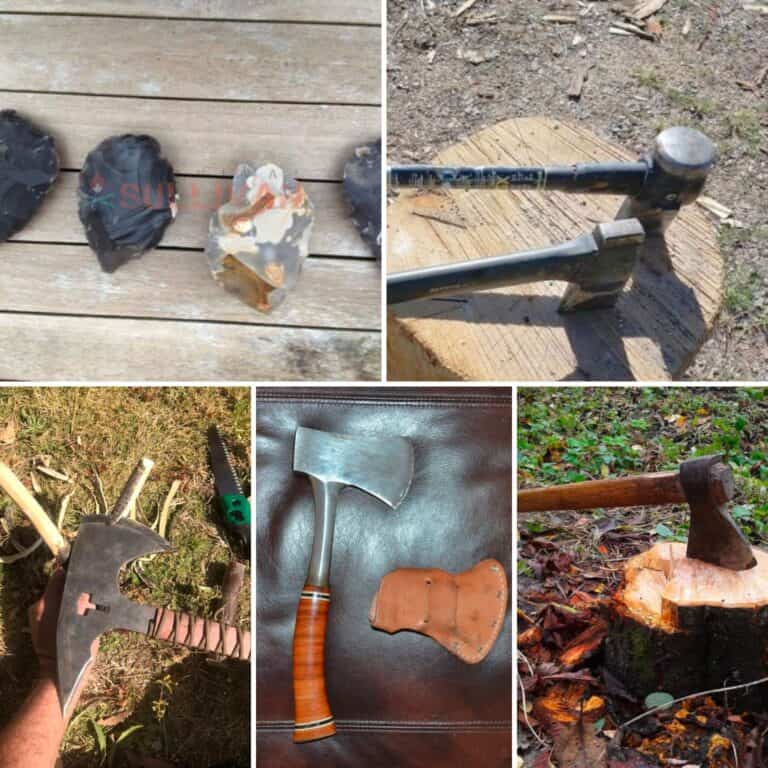
But, considering axes are so ubiquitous, there are a great many styles in circulation today, many of them hailing from various cultures around the world.
All of them are optimized for one or more purposes, and choosing the right axe is going to make your work, whatever it is, a lot easier.
Keep reading to learn more about 24 different styles of axe, and to figure out which one is best for you.
| Axe Type | Forestry and Utility | Camping and Survival | Weapon |
|---|---|---|---|
| Felling Axe | X | ||
| Forest Axe | X | ||
| Double Bit Axe | X | ||
| Splitting Maul | X | ||
| Hewing Axe | X | ||
| Splitting Axe | X | ||
| Broad Axe | X | ||
| Bearded Axe, aka Viking Axe | X | ||
| Hudson Bay Axe | X | ||
| Adze | X | ||
| Mattock | X | ||
| Pickaxe | X | ||
| Fire Axe | X | ||
| Shepherd’s Axe | X | ||
| Shingling Hatchet | X | ||
| Mortising Axe | X | ||
| Carpenter’s Axe | X | ||
| Hatchet | X | ||
| Hand Axe | X | ||
| Camping Axe | X | ||
| Crash Axe | X | ||
| Ice Axe | X | ||
| Battle Axe | X | ||
| Bardiche | X | ||
| Tomahawk | X | ||
| Throwing Axe | X |
Table of Contents
Forestry and Utility Axes
All of these axes are designed to do work with wood, from chopping down trees and splitting firewood to making specific cuts in lumber to allow the construction of furniture and structures.
1. Felling Axe
The classic long axe you see lumberjacks hauling into the woods. These are two-handed axes designed to cut through the fibers of the wood.
The heads are of moderate breadth, but typically quite narrow and sharp to enable them to bite deeply into the trunk of a tree.
Properly designed, kept sharp and used with the right technique, it is possible to bring down even a large tree with surprising quickness.
But be ready, because using one of these is quite a workout!
2. Forest Axe
A forest axe is basically a modification of a felling axe, one that is a little bit smaller overall with a shorter haft, or handle, intended to make it more maneuverable and easier to carry.
For general-purpose use, they are typically a great choice for dealing with anything but the largest, mature trees.
3. Double-Bit Axe
A double-bit axe is an axe that has a second blade, or bit, opposite the first. Although it might seem superfluous, this is actually a labor-saving invention.
The use of a double-bit axe allows the wielder to simply reverse the axe in hand when one edge begins to wear out, meaning that more work can be done quickly between sharpenings.
Alternately, some people choose to keep one edge razor sharp and use it only for optimal jobs, but they keep the other edge somewhat duller when the axe must be used on a questionable or risky job.
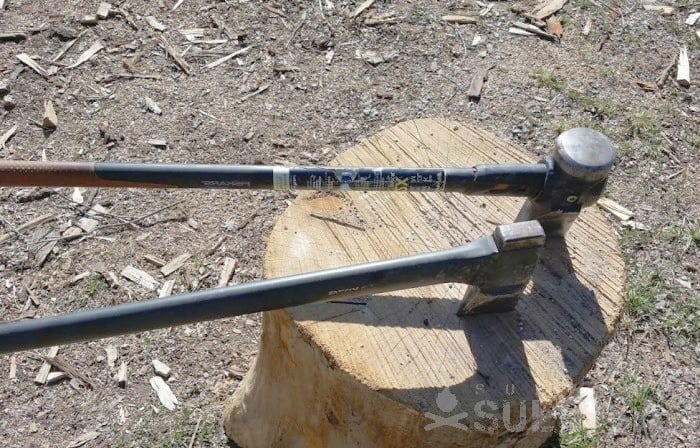
4. Splitting Maul
A splitting maul is a sharpened wedge that’s typically much heavier than a typical axe of comparable length.
It is designed, if the name wasn’t clue enough, to split wood lengthwise, along the grain of the fibers.
It can split even large, stout firewood with a single strike where it might take two, three or more strikes with a comparable true axe.
Used for any other purpose, they are clumsy and tiring. Just keep these on hand for firewood duty and you can thank me later.
5. Hewing Axe
A hewing axe is a special axe designed to process raw logs into usable, square lumber.
Although largely supplanted by modern sawmills, it’s still indispensable when working in an austere environment or if you just want to do something the old fashioned way for minimal cost at the expense of labor and time.
Available in a variety of styles and head shapes, a hewing axe might be just the ticket if you are trying to build a cabin, furniture or any other project out of wood.
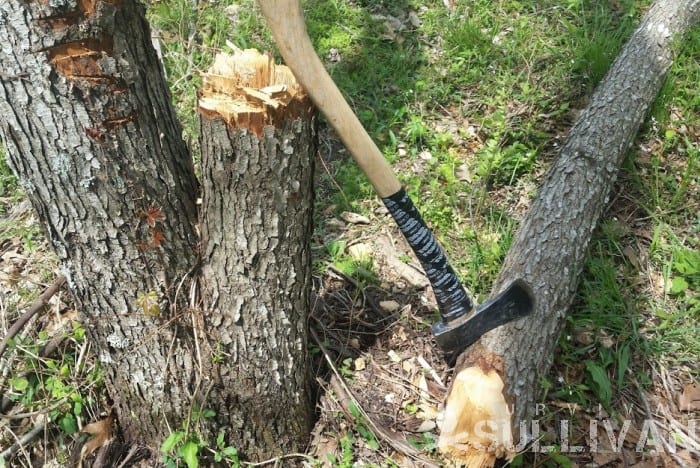
6. Splitting Axe
A splitting axe is somewhere between a felling axe and a maul. It’s not as narrow as a splitting axe, and nowhere near as broad as a maul.
This gives it much better chopping performance when you’re trying to split wood lengthwise along the grain, but it maintains some efficacy when you’re trying to cut through it horizontally. Not a bad choice if you’re working with softwoods…
7. Broad Axe
Although this colloquially refers to any axe with a tall blade or a deep beard, it actually refers to a specific type of axe used for processing lumber, specifically for the squaring off or finishing of lumber akin to a hewing axe.
Many axes of this type are given single bevel edges, meaning they are sharpened only on the one side in the same way as a chisel. This provides better control for close, precise work on a given workpiece.
8. Bearded Axe, aka Viking Axe
A bearded axe, sometimes referred to as a Viking axe, looks very similar to most others with one key difference.
The heel end of the bit extends quite a bit farther than normal, giving these axes a distinct visual appearance and a much longer cutting surface.
Although there are sometimes associated with the Vikings as a specialized battle weapon, it’s more likely that these were multi-purpose axes useful in building ships, and also for cleaving skulls.
Today, definitely not the most optimal choice for raw performance, but they are stylish and neat historical artifacts.
9. Hudson Bay Axe
A Hudson Bay axe is one that raises a lot of controversy because you hear plenty of arguments concerning what is, and more importantly what is not, a Hudson Bay axe.
In short, this is a compact axe that has a lot in common with a standard felling axe, right down to the shape of the handle and the head, although your typical Hudson Bay axe has a pronounced oval eye in the head that secures it to the handle, and also a straight drop leading to the heel of the blade. A versatile, handy, and capable axe good for a variety of purposes.
10. Adze
Another ancient tool that is sometimes it said to be distinct from an axe, but practically speaking it is better categorized as a subtype.
The only major difference between an axe and an adze is that the blade or bit of the ads is horizontal, that is perpendicular with the handle, rather than vertical or parallel with it.
They’re usually used for the shaping, carving and smoothing of wood rather than the heavy-duty work of cutting and chopping as with an axe. They may also be used as a hoe.
11. Mattock
The mattock is very similar to the ads discussed above, and it also shares some features with the double-bit axe also discussed elsewhere.
Essentially, the mattock has two bits, one horizontal like an adze and one vertical like an axe.
This gives users the best of both worlds, and the capability of an axe and an adze in a single tool at the expense of greater weight.
However, mattocks are usually used as a gardening or grounds keeping tool where there are employed to cut through tough soil, roots and other obstructions.
12. Pickaxe
A pickaxe is another versatile tool into a multipurpose item for long journeys into and around mountains was pretty smart.
13. Shingling Hatchet
A shingling hatchet is one of the more modern types of axes, being a little more than a handheld axe that features an integrated nail puller and a, typically waffle-faced, framing hammer head on the poll.
As you might have expected from the name, this type of axe is used in roofing, giving the worker all of the tools they need to both remove and fit new shingles with a minimum of downtime.
You can find these in the tool aisle of virtually every hardware store and big box home improvement store in the land.
14. Mortising Axe
Another highly specialized axe that is designed for processing lumber the mortising axe is designed to create mortises for joinery.
They can be used to shape both the tenon and the mortise itself, and are designed to penetrate straight into the wood under tight control, and also allow the fibers of the wood to be levered and snapped out cleanly to prepare for the next cut.
15. Carpenter’s Axe
A carpenter’s axe is a close relative of the hatchet, although they tend to be a little larger overall.
With a pronounced, deep beard and a notched handle near the eye of the axe head, they are intended to allow a carpenter to choke way up on the handle for maximum control.
This makes them perfect for general woodworking, rough shaping logs or other lumber, joinery, and more. Invariably, a carpenter’s axe has a flat poll that allows it to be used as a hammer.
Camping and Survival Axes
Axes and related tools are designed to be easy to carry on adventures, or for getting people out of a jam in specific environments or circumstances.
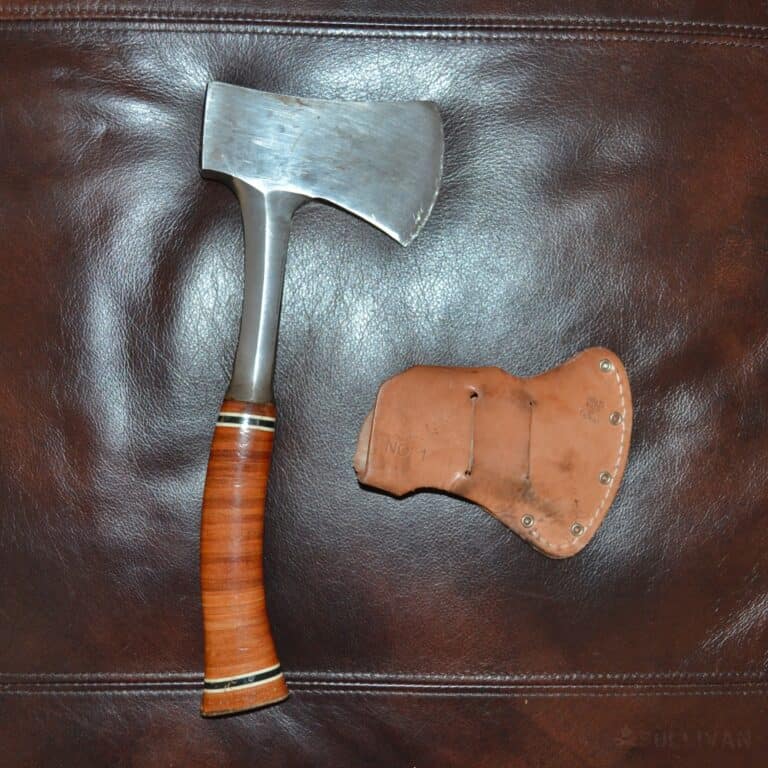
16. Hatchet
A hatchet, at its simplest, is a little more than a compact axe designed to be used with only one hand. But, it can actually be quite a bit more complicated than that.
Without getting too far into the weeds, the major distinction between a hatchet and a hand axe is that a hatchet will always have a distinct and protruding hammer poll by design, whereas a hand axe will have it simply a flat poll, or butt.
Also worth noting is that a hatchet may have a straight or curved handle.
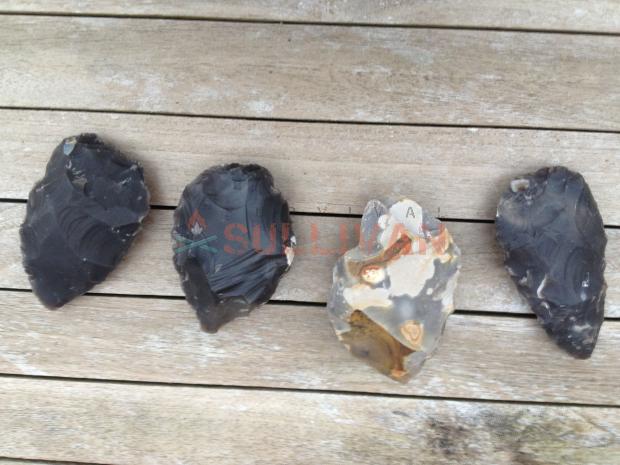
17. Hand Axe
As described above, a hand axe is a smaller version of an axe, but one that is a distinct design compared to a hatchet.
A hand axe has a single cutting edge like a hatchet, but it lacks the protruding hammer pole of the hatchet, having instead a typical flat poll.
Although commonly used for hammering, this isn’t the intended purpose. Also, hand axes almost always have a slightly curved handle.
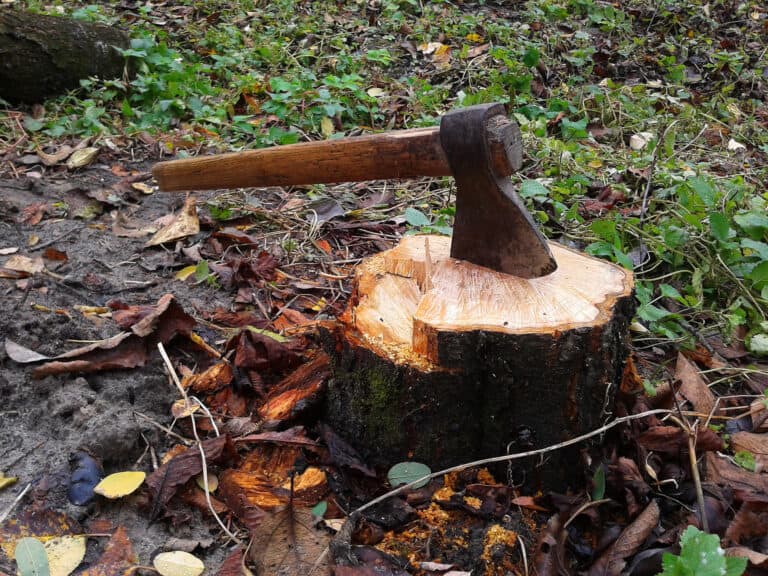
18. Camping Axe
A camping axe is another “in-between” design: much larger and longer than a hatchet or hand axe, but significantly shorter than a full-sized felling axe, and typically longer than a Hudson Bay axe.
Generally, they are treated as a convenience option for camping and other outdoor expeditions that provide significantly more performance when chopping as compared to its smaller brethren, while at the same time remaining much lighter and easier to carry compared to a full-size axe.
19. Crash Axe
Crash axes are specialized tools usually included as part of the emergency kit on aircraft and sometimes other vehicles.
They are designed to break through reinforced glass or even cut away metal bodywork, and even allow users to pry heavily with them if they need to.
They can be used to allow surviving crew members of a crash or breakdown to rescue their fellow crew members, or just get themselves out of what would otherwise be a fatal situation.
They are sometimes seen as part of a common highway emergency kit in automobiles.
20. Ice Axe
Another super-specialized axe, this looks more like a mattock than a traditional axe. Possessing a serrated pick on one side and a short, gently curved horizontal blade on the other, they’re designed to allow hikers and climbers to safely negotiate and shape dangerous, ice-covered terrain and other surfaces.
They’re also used to move across them under better control and safety by employing the axe as a handhold after being driven into the ice.
Axes as Weapons
Understanding the destructive power of a steel wedge slamming into a human body requires little imagination. Axes have been used as weapons throughout history, and remain in use today.
21. Battle Axe
Battle axe is a generic term for any axe purpose designed as a weapon. There have been many, many styles over the ages from all kinds of different cultures around the world.
Battle axes have an advantage over swords in that they deliver considerably more impact over a smaller surface area, and can inflict injuries even through armor.
That being said, they are much slower to use compared to a sword, and fighters who commit to a swing and miss would often be left wide open. Often highly specialized, most make poor tools, even for wood.
Believe it or not, they’re still employed today as specialist battlefield tools and backup weapons! It turns out axes will truly never go away!
22. Bardiche
A bardiche is a special type of battle axe, and is more properly described as a polearm. This axe consists of an incredibly long but shallow axe head averaging 2 feet long, and is sharpened to a razor edge across its entire length.
The length of the blade combined with a very long haft would allow a fighter to strike from a safe distance with devastating, cleaving blows.
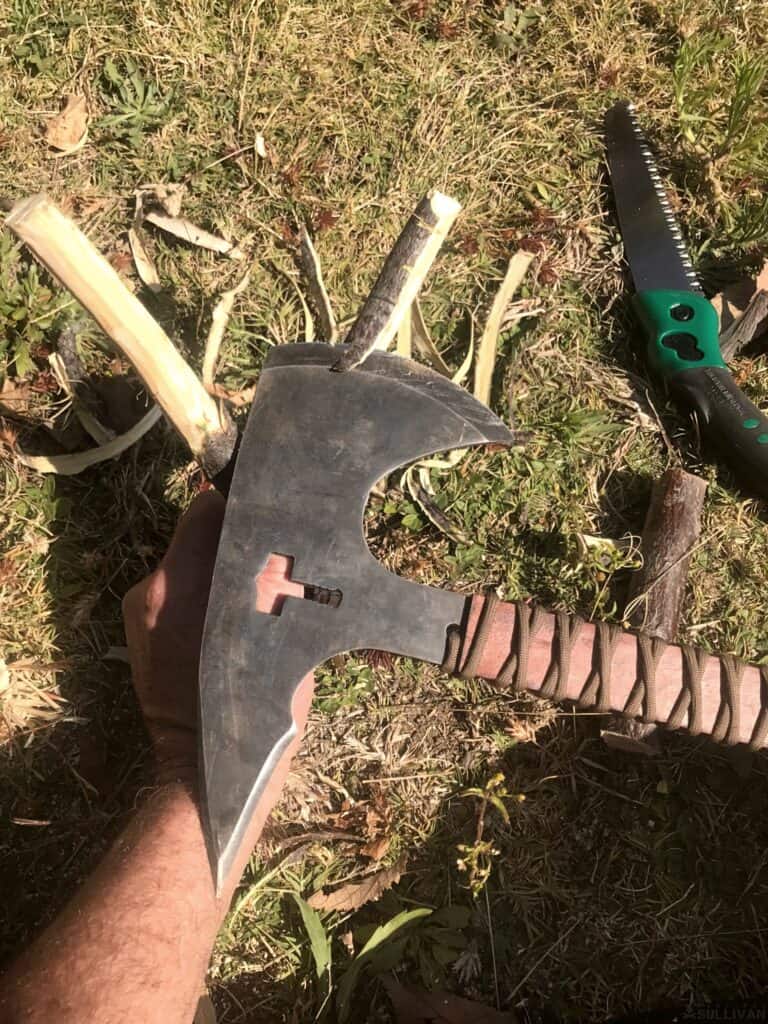
23. Tomahawk
The tomahawk was originally an American Indian weapon consisting of a simple, short and narrow axe head fitted to a straight handle.
Quick, maneuverable and still devastating in close combat, the tomahawk is renowned for its versatility: it could be used in hand as a weapon or tool, thrown, and even played a part in various customs and ceremonies.
The tomahawk is distinctly American, and lives on today both as a compact tool akin to a hatchet and also a formidable weapon.
Most notably, a true tomahawk has a head that is slip fit through the eye on the handle, not pinned or wedged in place as with a traditional axe head.
24. Throwing Axe
A throwing axe is exactly what it says: an axe that is designed and balanced for throwing.
Usually about the size of a hatchet or tomahawk, throwing axes have been used as ranged weapons throughout history, and also designed just for fun and recreation.
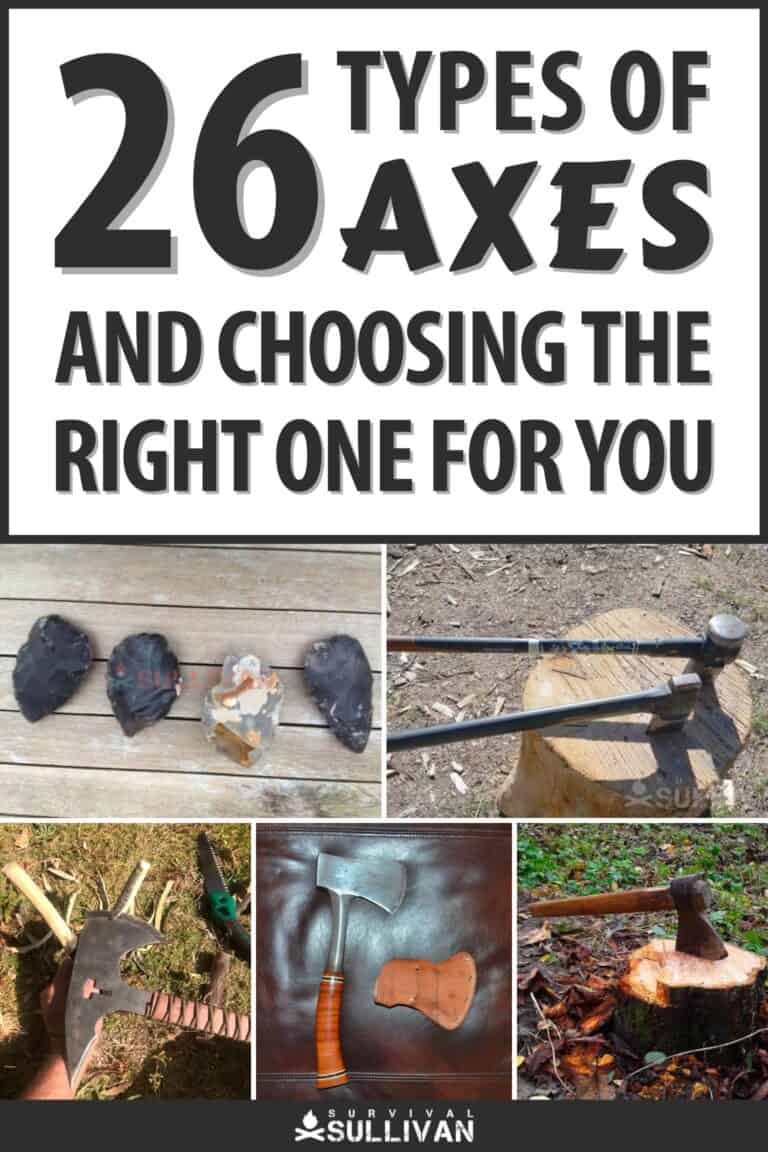

Tom Marlowe practically grew up with a gun in his hand, and has held all kinds of jobs in the gun industry: range safety, sales, instruction and consulting, Tom has the experience to help civilian shooters figure out what will work best for them.

good article, BUT the double bit axe is very dangerous and should be used only by experienced users ,, and short hatchets are also very dangerous to use as they are close to your body parts,feet and toes, fingers. where a long handled axe is further away from you.be carful, wear thick pants and shoes..